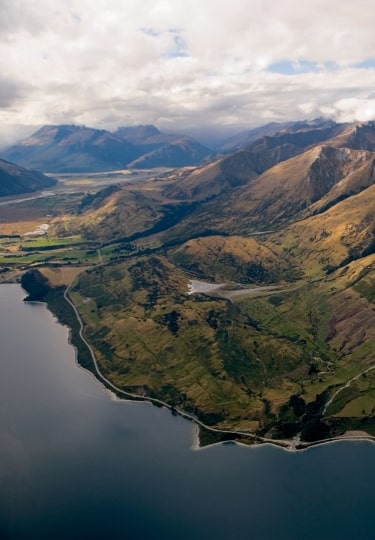The most beautiful places in New Zealand are found throughout the country’s north and south islands.
However, New Zealand is a country of two halves, with each island offering different experiences. The north’s headline charms include the Bay of Islands; a swathe of geothermal valleys cloaked in sulphurous mist; and a network of subterranean caves lit by glow-worm colonies.
Travel to the south and the tranquillity of the Marlborough Sounds belies this larger island’s more rugged nature. This is a land of fjords and imperious peaks that plunge into the jade-colored surf of the Tasman Sea. But it’s not all macro and macho, with quieter, more fragile treasures such as its Moeraki Boulders or endangered King Shag population.
Here’s a guide to New Zealand’s beautiful places.
Urupukapuka Island
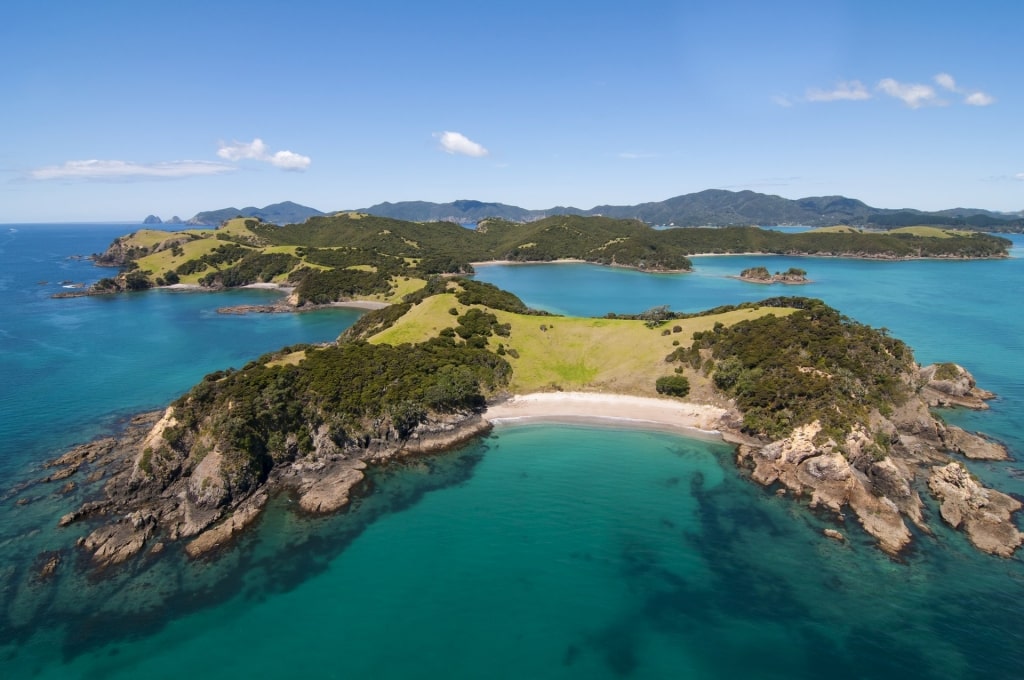
Urupukapuka Island
Amid the many spectacular and pulchritudinous dots of land that are scattered across the Bay of Islands, Urupukapuka Island stands out. It manages this by being one of the most beautiful places in New Zealand.
The largest island in the archipelago, Urupukapuka is a parcel of grassy hills juxtaposed with a craggy coastline populated by mewing sea birds. Well-signposted walks lead you to the best of the island’s many outlooks across the bay. Beyond the lime green shallows, a volcanic sea bed is a playground for divers, while yachts bob in secluded coves.
Urupukapuka Island is a magnet for day-trippers. A 40-minute ferry from Paihia brings you conveniently close to the bar in Otehei Bay. You’ll also find one of New Zealand’s best beaches in Otehei, a sandy fringe edged by calm shallows with a blizzard of colorful fish beneath the wharf. How is it that such a place can feel so uncrowded, even in summer?
Hole in the Rock
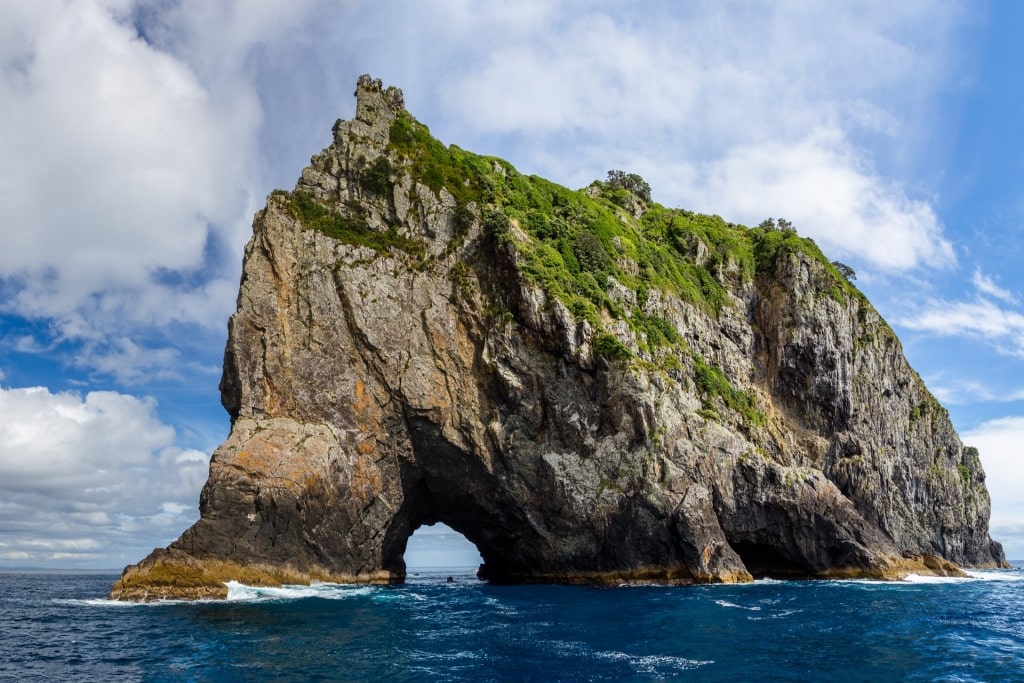
Hole in the Rock
Amid the Bay of Islands’ 144 islands, islets, and outsized rocks is thrusting Piercy Island (or Motukokako, as the Maori call it).
Protruding off of Cape Brett, this is the location for the rather low-key sounding “Hole in the Rock”. However, as your boat bobs towards Motukokako’s jagged tooth profile, any subdued expectations will evaporate as the island’s 52-foot, naturally formed sea tunnel comes into view.
As your boat navigates carefully beneath the shade of the rocky roof, the current will pull you through this natural passageway, the slap of the waves echoing around the cave walls. It’s an atmospheric experience to take in while cruising the Bay of Islands, one of the most beautiful places in New Zealand.
Puketi State Forest
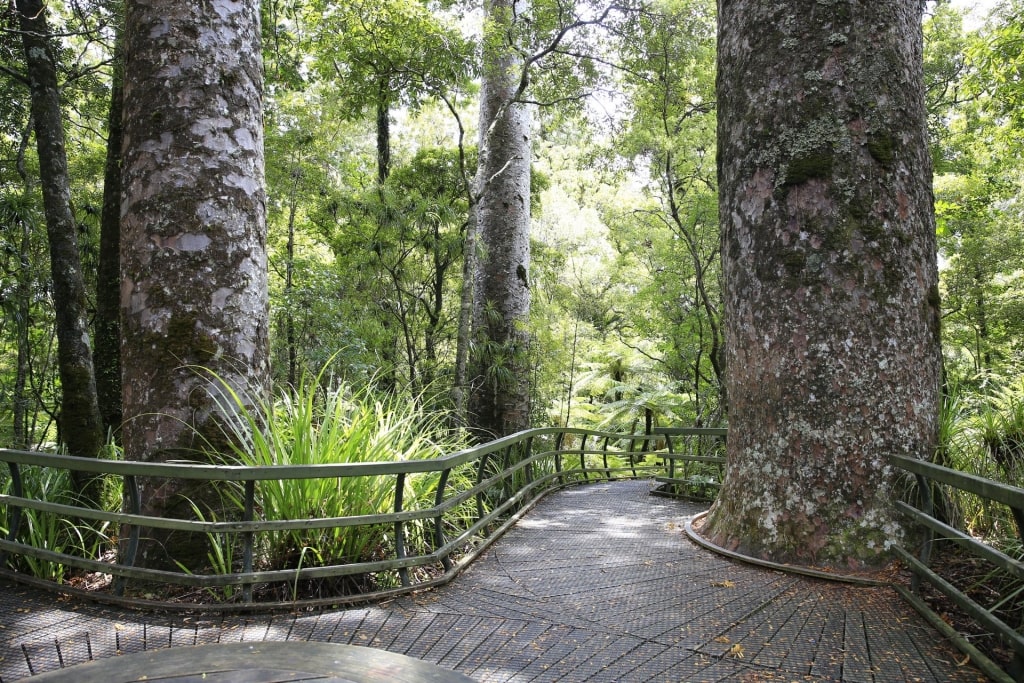
Puketi State Forest
In a country devoted to the flightless kiwi bird, Puketi State Forest is something of a temple to these adorable wingless creatures. The largest contiguous tract of native forest on the North Island (when combined with Omahuta Forest), it’s one of the most beautiful places in New Zealand. You’ll find its densely forested extent between Whangaroa and Hokianga Harbors.
Try the one-hour Puketi Nature Trail, near Kerikeri, for an easy introduction to the beautiful forest. With the gargantuan silvery trunks of native Kauri trees rocketing up into the canopy, you’ll stroll lush, fern-lined walkways. Keep an eye out for the scuttling North Island Brown Kiwi, long-tailed bats, or the northland tusked weta, a giant, flightless cricket.
Read: North Island, New Zealand: 11 Incredible Places to Visit
Kauri Rainforest
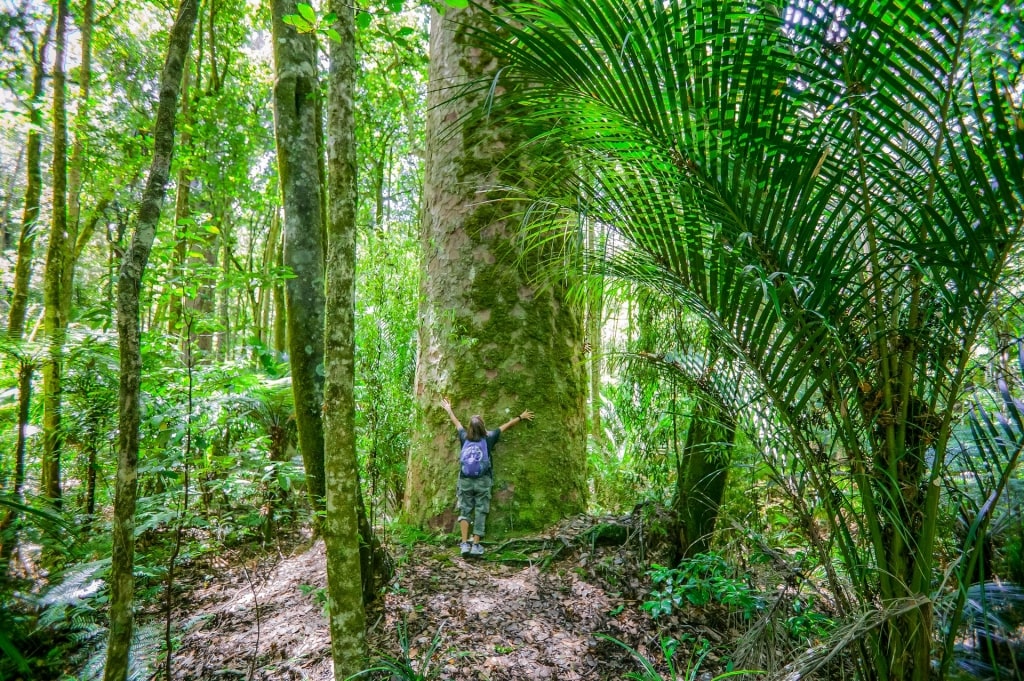
Kauri Rainforest
Kauri is a variety of giant conifer known for the girth of its smooth-barked, non-tapering trunks. These trees can grow higher than 165 feet and live for two millennia. Unfortunately, their population was devastated by overlogging when the Europeans arrived in New Zealand, especially as their trunks supplied excellent timber for ships’ masts.
Today, their numbers have bounced back. Kauri trees can now be found on both islands in New Zealand, although Waipoua Forest is seen as one of the country’s best examples of ancient Kauri forest. Within its tangled interior stands the mossy trunk of Tāne Mahuta, the largest Kauri in the country and New Zealand’s answer to General Sherman.
This immense specimen, named for the Maori god of forests and birds, is believed to have started life as a seedling around 500 BC—a fact you may need time to absorb. A few hours’ north of Auckland, you can join the five-minute Tāne Mahuta walk to see this timeless tree and the unique plant communities flourishing by its roots.
Ruakuri Cave
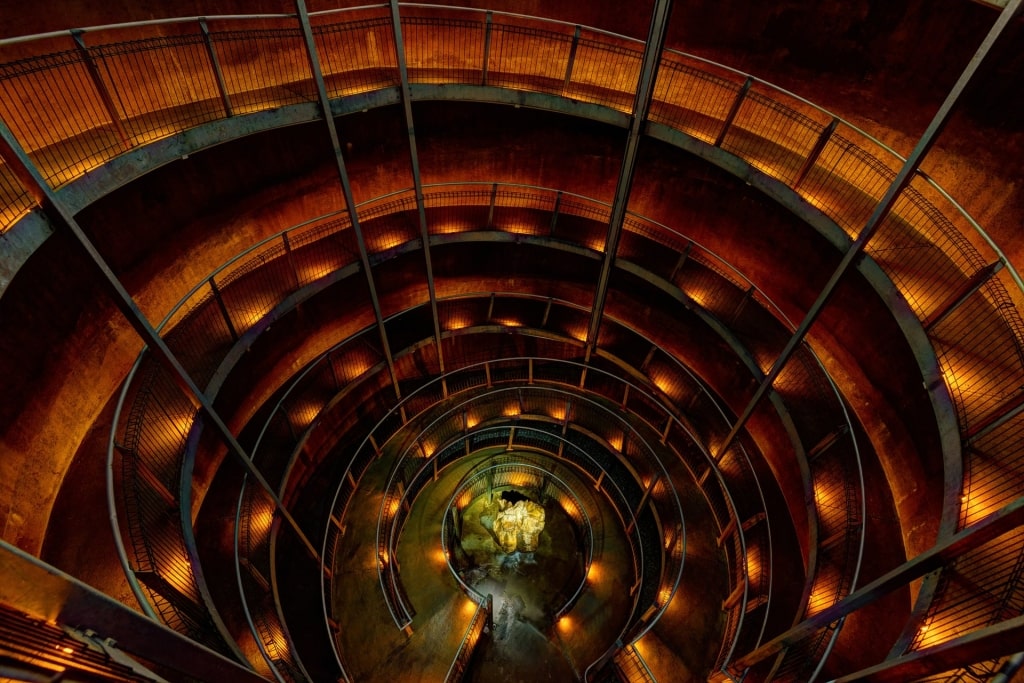
Ruakuri Cave
A couple of hours from the North Island city of Tauranga, you come across the entrance to the limestone Ruakuri Cave.
The name “Ruakuri” translates as “Den of Dogs”, but no fear: the wild dogs that used to shelter in the mouth of this ancient cave have since moved on. In their place is an innovative ramp (Ruakuri is the only wheelchair-accessible cave in the Southern Hemisphere) that spirals down into an underworld of concealed waterfalls, night-black waterways, and shining above them, glowworms.
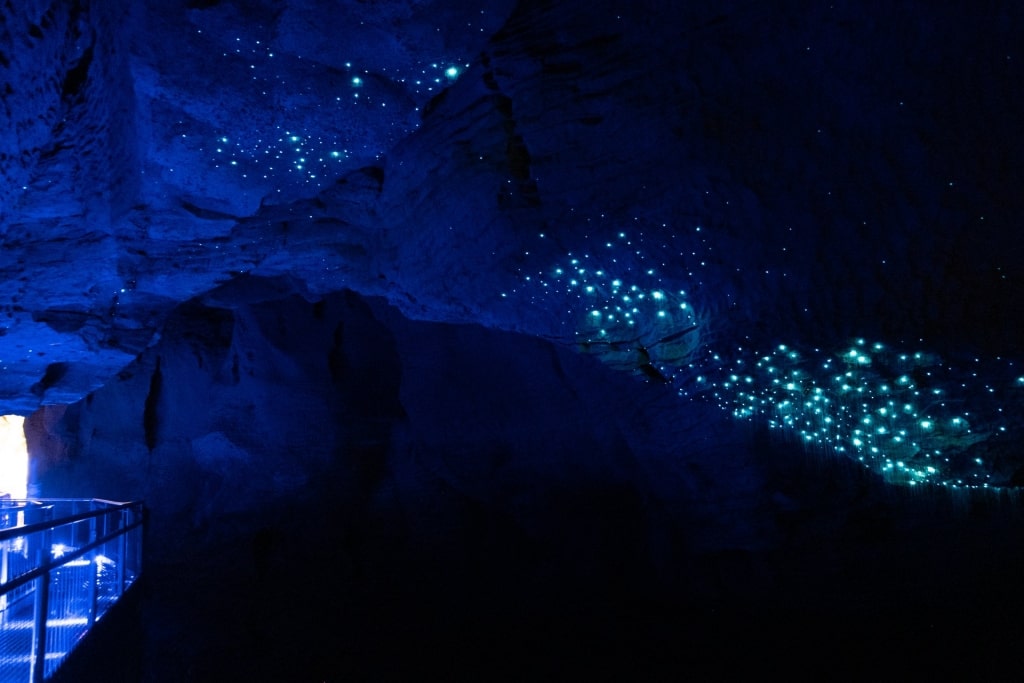
Ruakuri Cave
These glowworms, the larvae of a cave-dwelling gnat endemic to New Zealand, collect in glittering galaxies across the undulating surfaces of the cave. Ruakuri, along with its connected Waitomo Cave, is the epicenter of these glowworm displays, although they can be found in smaller quantities throughout both of New Zealand’s islands.
The guided tour of the damp, dripping caves takes you along the country’s longest available underground walk. It’s one of the most unexpected of New Zealand’s beautiful places.
Mount Tarawera
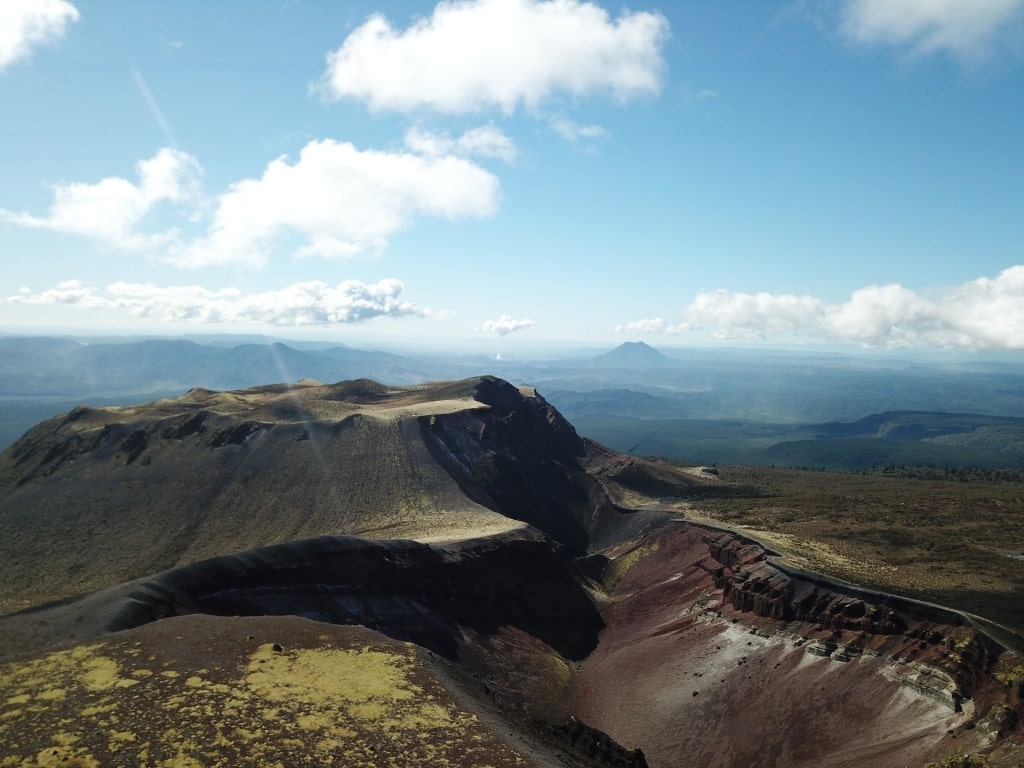
Mount Tarawera
Famous for its devastating 1886 eruption, Mount Tarawera is a volcano, the jagged profile of which rises east of Rotorua, between the Rotoiti and Matahina Forests.
The volcano lies on the edge of the tranquil Lake Tarawera. It’s difficult while visiting this paradisiacal landscape, with exotic birdsong all around you, to imagine the cataclysmic devastation that occurred following the eruption.
Read: Most Beautiful Mountains in the World
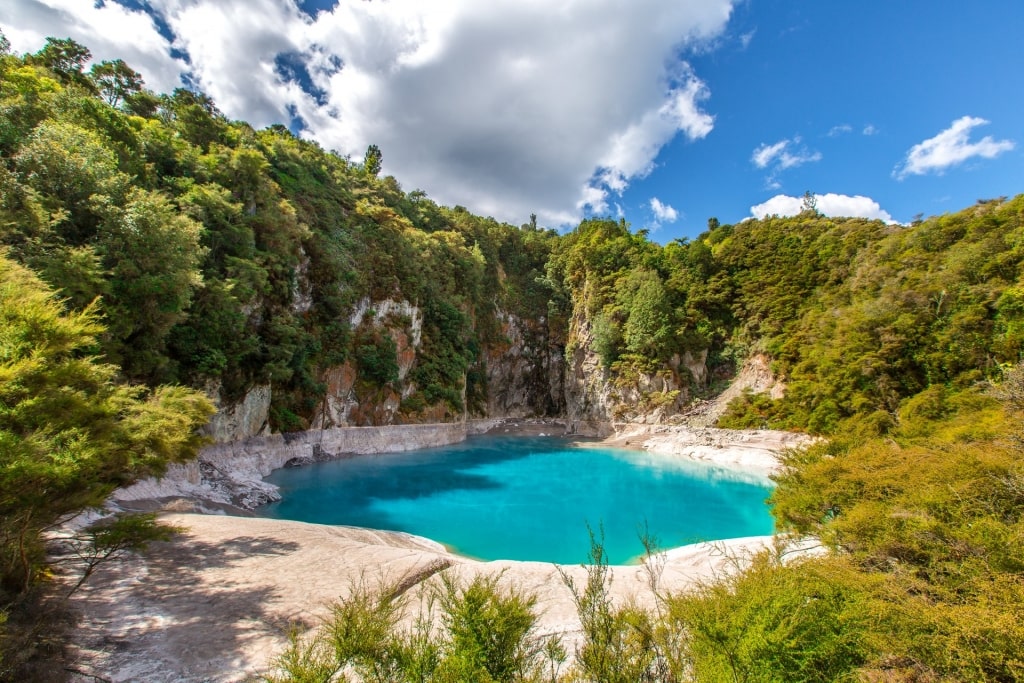
Waimangu
Nearby Maori villages were destroyed and the world-famous silica springs, the Pink and White Terraces, either eradicated or buried beneath the falling debris. It wasn’t all destruction, however. The blast also created the Waimangu Volcanic Rift Valley, which is the world’s youngest geothermal valley.
Waimangu is open to visitors and tours of the hills and steaming lakes are available to book. It’s also possible to take a guided walk across the rust-red rift of Mount Tarawera, the high altitude hike offering far-reaching views over the encircling lake country.
If you’d rather keep a little bit of distance between yourself and the volcano, numerous boardwalks, and meandering trails make their way through Lake Tarawera’s surrounding woodland. Popular destinations include the hot springs at Hot Water Beach and a forest walk that leads to the plunging Tarawera Falls.
Te Puia Thermal Reserve
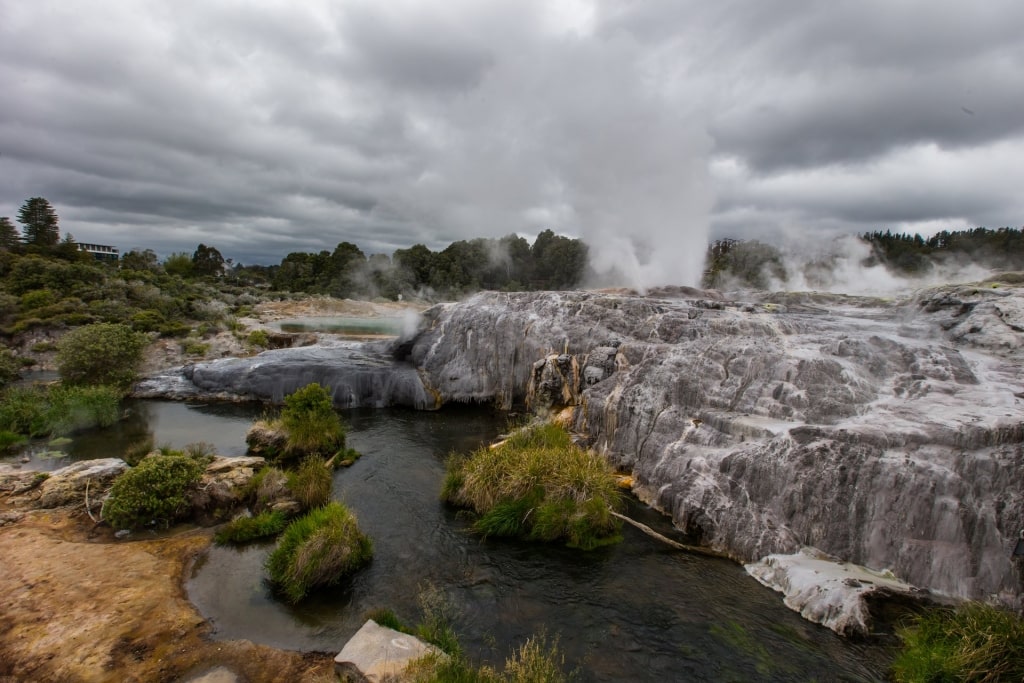
Te Puia Thermal Reserve
Deep in the super-heated heart of the Te Puia Thermal Reserve on the North Island, you’ll find the hissing, spurting Pohutu Geyser.
Pohutu, the apt Maori name, translates as “constant splashing”. Like some over-engineered novelty clock, the geyser, the southern hemisphere’s largest, offers an hourly jet of steaming water that shoots 100 feet into the air.
A phenomenon of the Taupo Volcanic Zone, you’ll also find pools of boiling mud as well as sulfurous whiffs coming from the nearby hot springs. After you’ve seen the shooting geyser, it’s time to discover the rest of Te Puia.
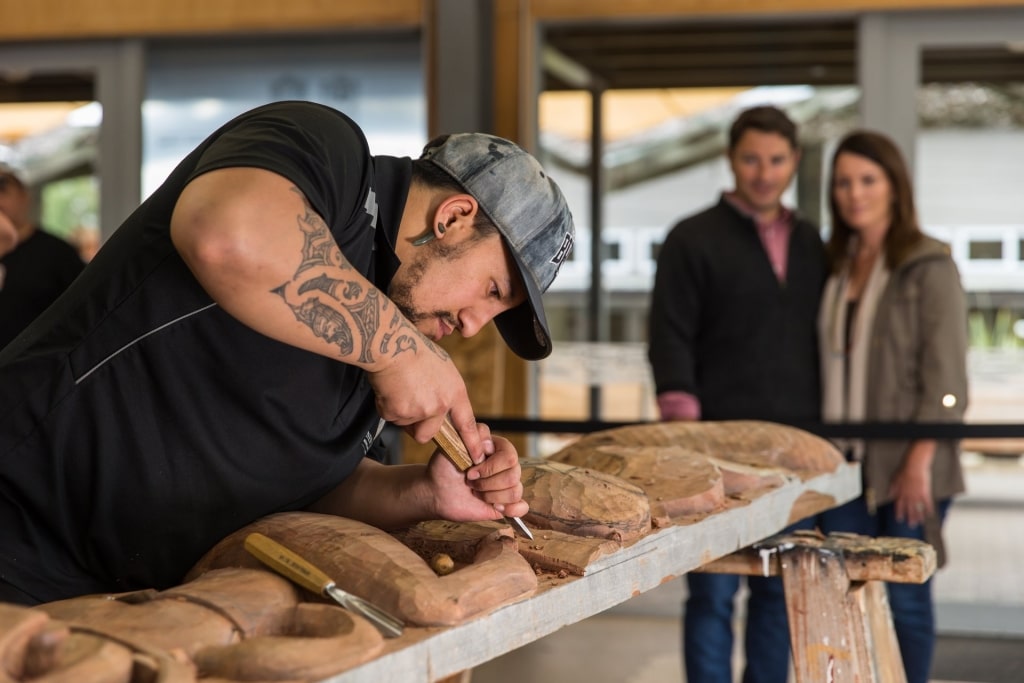
Te Puia Thermal Reserve
Explore the dedicated kiwi conservation area or really get under the tattooed skin of Maori culture at the cultural center. The center doubles as the national school for the Maori arts of carving and weaving, and superb demonstrations of either discipline are the only things more reliable than Pohutu.
Marlborough Sounds
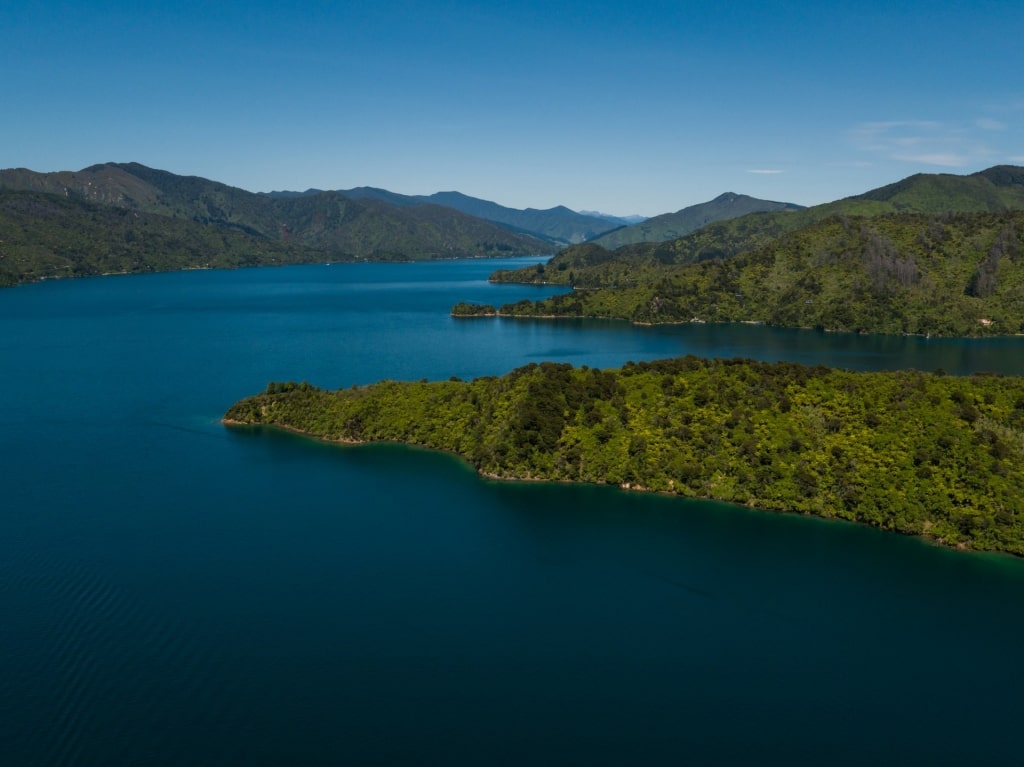
Queen Charlotte Sound
Found at the crinkly northern tip of the South Island, the Marlborough Sounds, a network of submerged river valleys, is regarded as one of the most beautiful places in New Zealand.
Across the Cook Strait from windy Wellington in the north, you’ll enter the Queen Charlotte Sound as you near the end of your ferry journey to the South Island. As with the rest of the country, the forested Sounds are a highly biodiverse place and the only home to the white-chested King Shag.
Read: Things to Do in Wellington, New Zealand
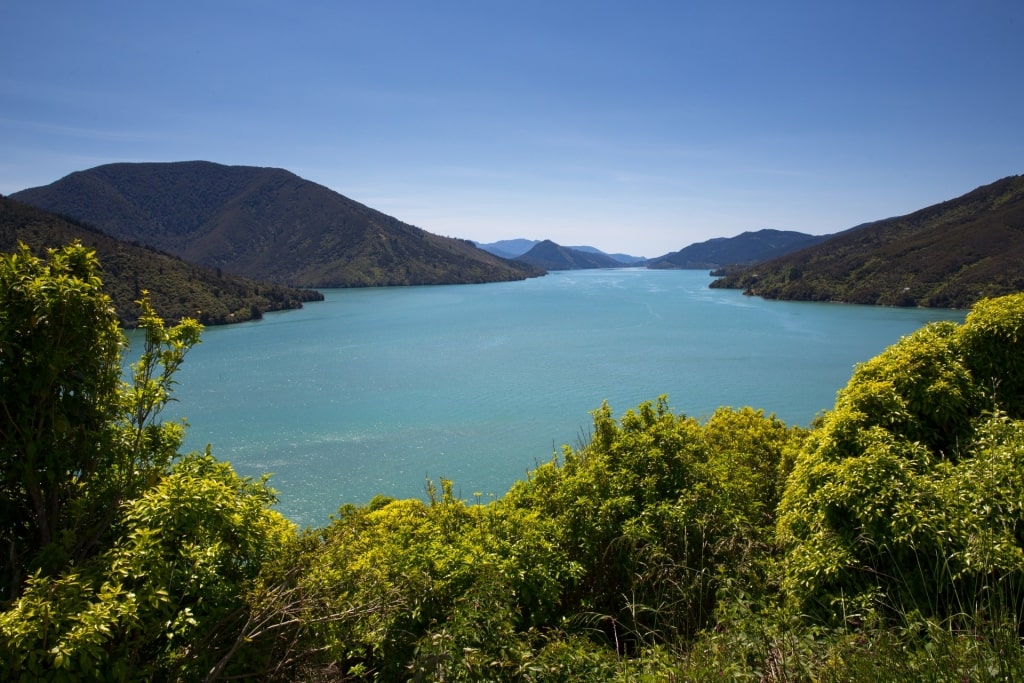
Queen Charlotte Track
The sheltered waters, home to dolphins and the occasional orca, make for a fabulous excursion by kayak, although the shorelines can be quite resistant to making a landing. To better pierce the pristine native bush, follow the epic Queen Charlotte Track, scaling ridges and skirting shores, on one of New Zealand’s best hikes.
Travel inland from the Sounds and you’ll quickly arrive at the Marlborough wine-making region, arguably New Zealand’s preeminent appellation, and the largest in terms of production. Embark on a self-guided cycling tour of this world-famous region’s tasting rooms before loading your panniers with clinking bottles of pinot noir and sauvignon blanc.
The Southern Alps
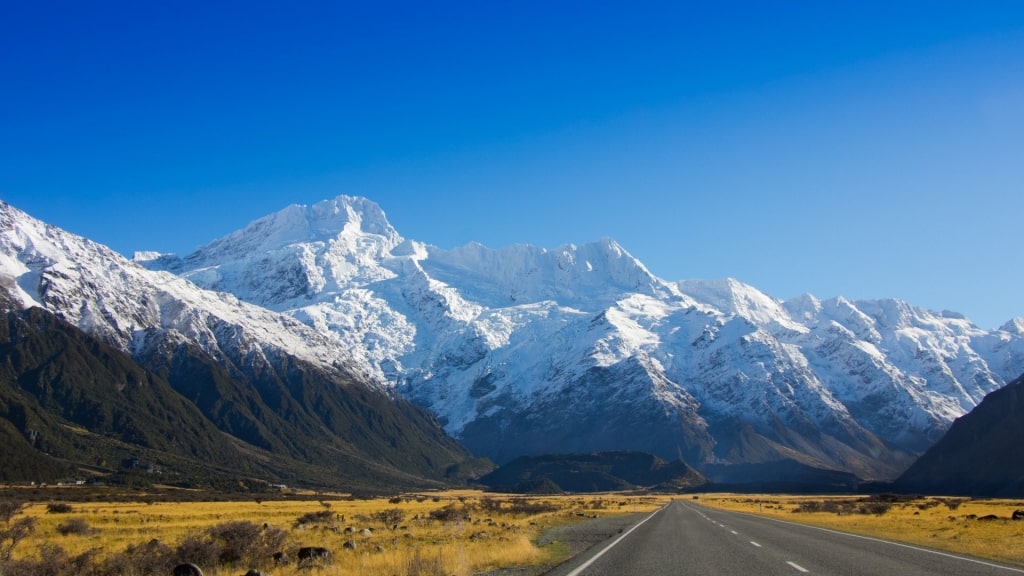
The Southern Alps
The Southern Alps characterize the South Island and they’re a part of, or background to, many of the most beautiful places in New Zealand. Running from the island’s northeast corner to southwest toe, the range bristles with peaks.
It’s easy to see, especially when they’re capped in snow, how the Maori came to call them: “Kā Tiritiri o te Moana” or “The mirage of the ocean”. The Alps’ roughly 300-mile length is divided up into smaller ranges that often double as must-see national parks.
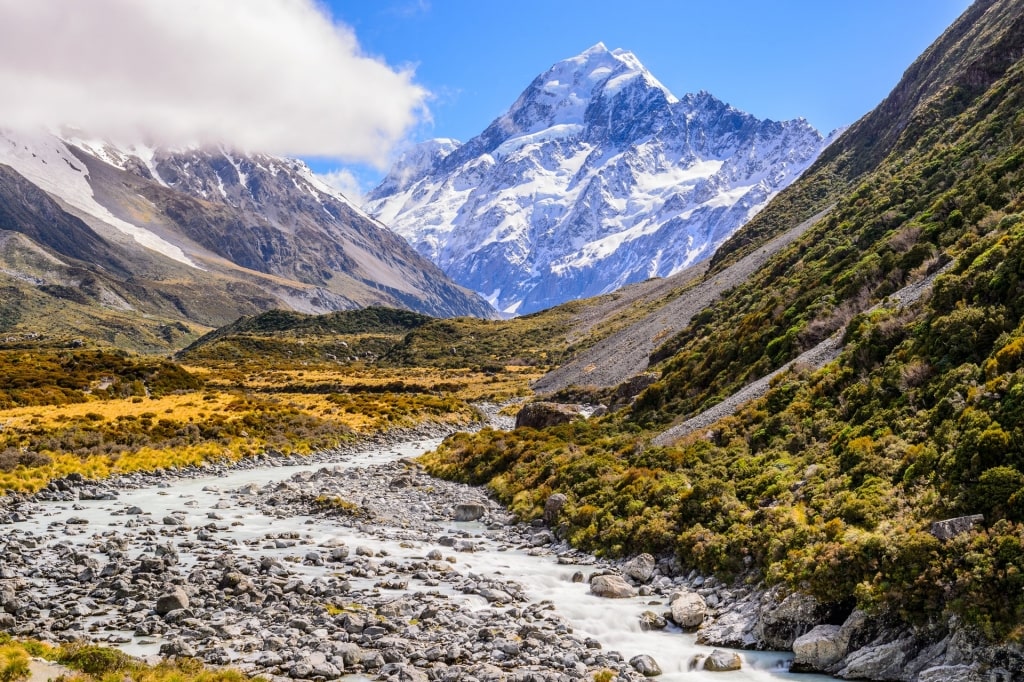
Aoraki Mount Cook National Park
About midway along the island, Aoraki Mount Cook National Park is centered around the Southern Alps’ highest peak, Aoraki, or Mount Cook, which tops out at 12,200 feet.
Admire the magnificent mountain scenery from the comfort of the Southern Alps Express train. You’ll board at Arthur’s Pass, the highest in the entire range, descending into a deep valley as the train rattles past tumbling waterfalls, over deep gorges, and in and out of tunnels. Oversized windows make for the best imaginable views of this jaw-dropping vista.
Koekohe Beach
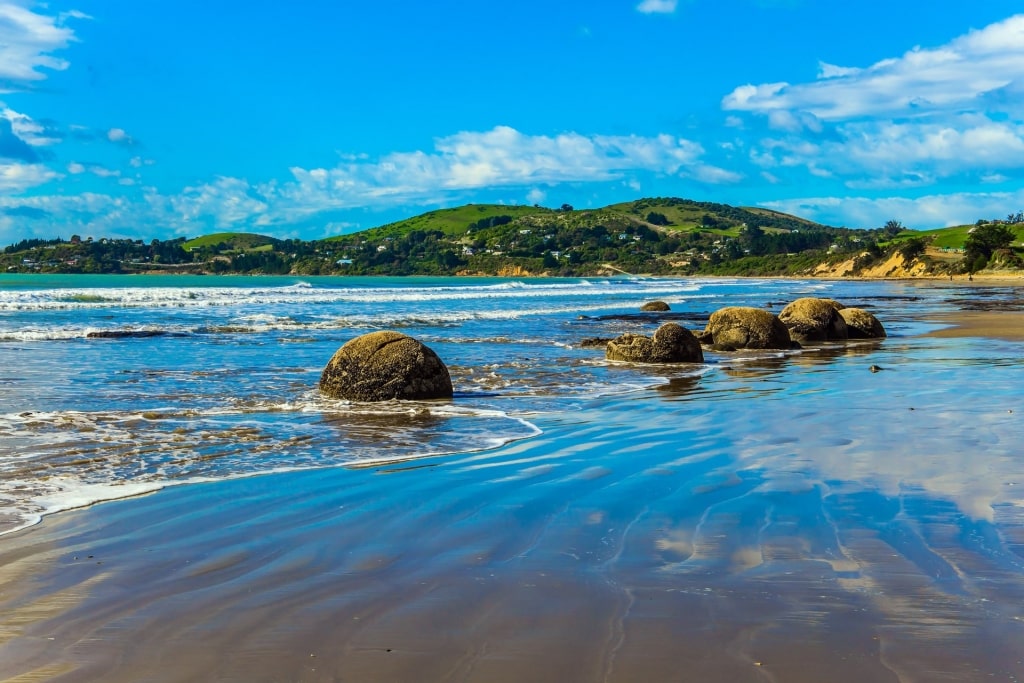
Koekohe Beach
Koekohe Beach is a handsome sandy beach an hour north of Dunedin on the South Island’s east coast. However, its inclusion in this list of the most beautiful places in New Zealand is all about the boulders gathered along the shoreline. These are the Moeraki boulders, a world-class example of a remarkably weird geological phenomenon.
Washed by the waves, the boulders look like the eggs of some sea monster that have washed up on the sands. While they vary in size and shape, they are surprisingly smooth and round.
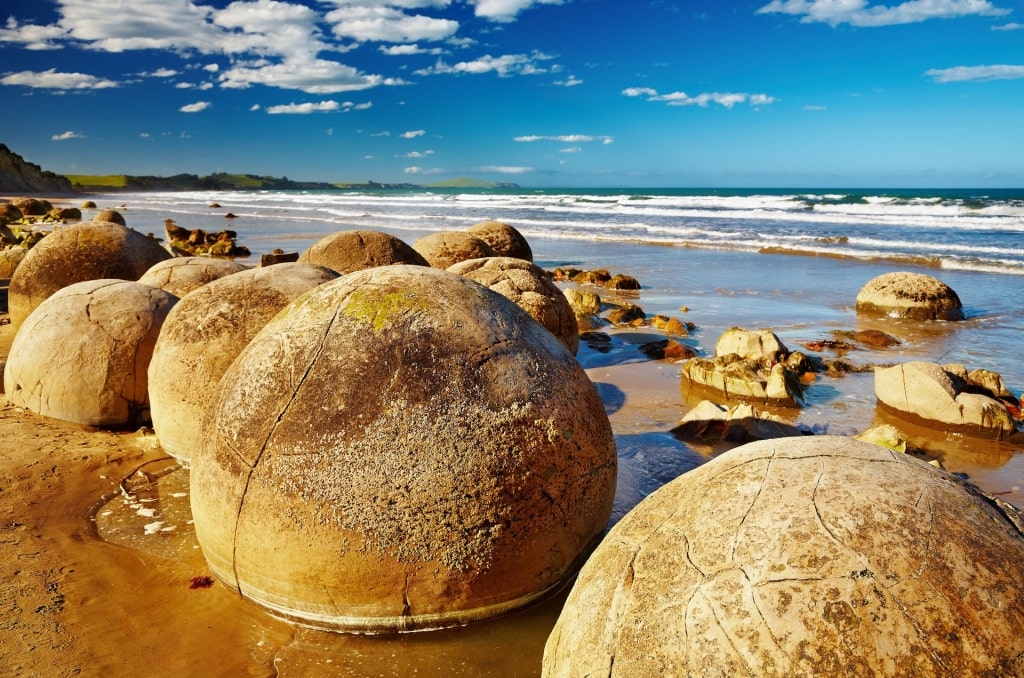
Moeraki Boulders
These spherical phenomena are known as “concretions”. The Moeraki Boulders first began to form when this part of the New Zealand coastline was an ancient sea bed, over five million years ago. Eventually, erosive forces have released them from the grassy bluff and onto the beach.
Their overall appearance is remarkably egg-like, and it’s little wonder that concretions are often mistaken for being fossilized eggs. The Maori believed they were the water gourds washed ashore from the wreck of a sailing canoe. For Instagram users, the ones that have cracked open are perfect props.
Fiordland’s Sounds
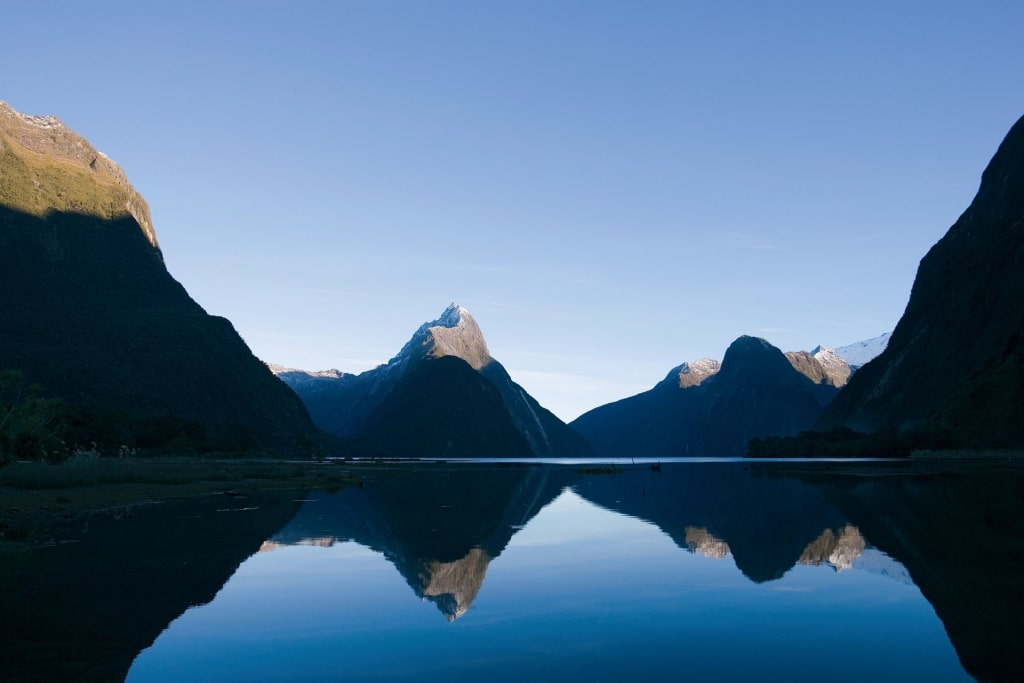
Milford Sound, Fiordland National Park
In the far southwest of the country, you have unquestionably one of the most beautiful places in New Zealand, Fiordland National Park.
A place of glittering tarns, gnarled beech wood, and the home of the world’s only alpine parrot, Fiordland is a slice of spectacular natural scenery. Its name is derived from the numerous fjords or sounds that characterize this national park. On a map, it appears that the land is close to disintegrating into an archipelago, so extensive are these waterways.
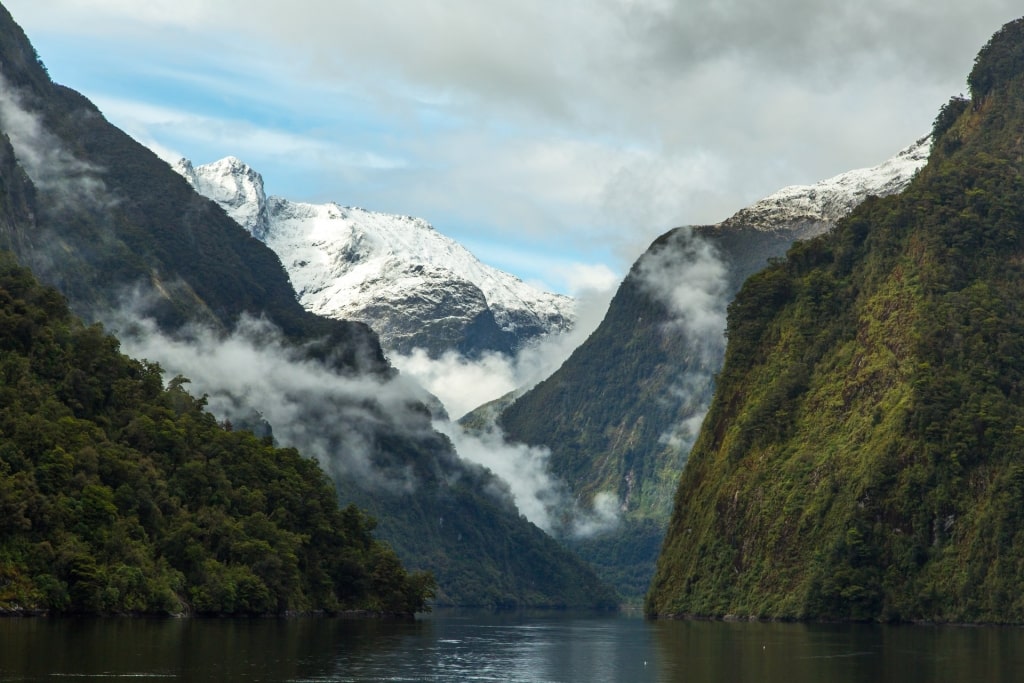
Doubtful Sound, Fiordland National Park
An unmissable experience in New Zealand’s fjords is to sail along the quiet waters of Doubtful or Milford Sound. The former is the deepest fjord in the area, while Milford Sound offers a narrower channel and therefore a greater sense of the fjord’s topographical grandeur. Both supply plunging waterfalls, playful bottlenose dolphins, and an overwhelming sense of awe.
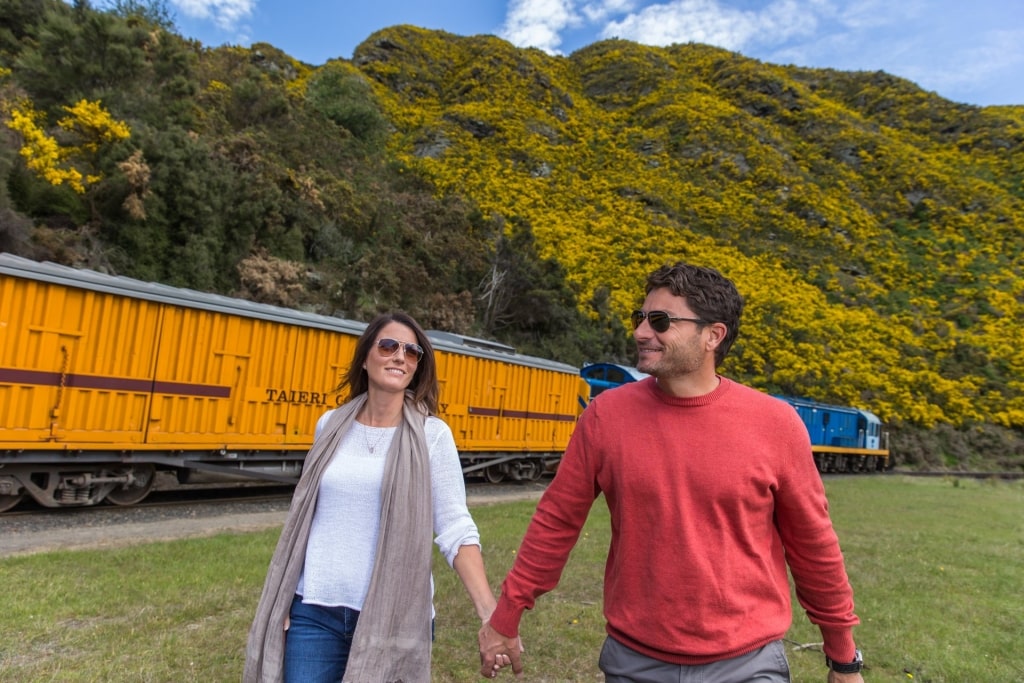
Dunedin
Experience all the North and South Islands’ most beautiful places and more on a cruise to New Zealand. From incredible natural vistas, astonishing Maori culture, and world-beating wines, New Zealand is a trip of a lifetime.
Browse our cruise itineraries to book an incredible vacation to New Zealand.
